Candyman (1992)
Directed by: Bernard Rose
Written by: Bernard Rose, Clive Barker
Starring: Kasi Lemmons, Tony Todd, Virginia Madsen, Xander Berkeley
USA
AVAILABLE ON BLU-RAY: 29th October, from ARROW VIDEO
RUNNING TIME: 99 mins
REVIEWED BY: Dr Lenera, Official HCF Critic
Helen Lyle, a Chicago graduate student researching urban legends, hears of a local story about the Candyman who can supposedly be summoned by saying his name five times while facing a mirror, whereupon he will kill the summoner with a hook jammed in the stump of his right arm. Helen investigates a killing in the notorious Cabrini-Green housing district and uncovers twenty five other similar murders attributed by some residents to Candyman. She decides to write a thesis on how the people of Cabrini-Green use the Candyman legend to cope with the hardships of living there, and when she and her friend Bernadette Walsh, skeptical of Candyman’s existence, call Candyman’s name into the mirror in Helen’s bathroom; nothing happens – or does it?
In my opinion one of the top five horror films of the ‘90s and perhaps my own personal favourite from a decade that I don’t feel was one of the genre’s finest, Candyman, which partly builds on ideas from director Bernard Rose’s very fine chiller-for-kids Paperhouse, remains a highly haunting, frightening, intelligent and ambiguous treat. Yes, if taken literally some aspects of it don’t make sense, but then this is one of those films where the viewer is asked to interpret what’s going on and where what he or she thinks may be different to the next person. It manages to juggle a hell of a lot in its hour and a half running time, even bringing in just a little bit of social commentary and hints of strange romance [elements that would probably be more prominent if the film were made today] to its combination of ghost story, supernatural slasher and – if you want [it depends on what you think] – look at an insane killer, though I shall try to explain what I personally think the movie is about more than anything else later on in this review. Set mostly during the day time, it avoids most of the usual cliches until towards the end when it riffs on some older horror tropes though without ever losing focus, and only has a few of the expected jolts and gory moments [though boy does Rose prove to be a master at delivering them], the film often choosing to frighten more by ideas, by implication, which is kind of appropriate given what I feel is its central theme.
The basis was a short story called The Forbidden by Clive Barker, and nearly everything in that is in the film, though Rose changed the setting was changed from Liverpool to Chicago. Looking for locales, he found Cabrini-Green, “an incredible arena for a horror movie because it was a place of such palpable fear”, while a script rewrite may have been inspired by a murder case in which Ruthie Mae McCoy, a resident of Chicago’s Abbot Homes housing project., was killed by an intruder who entered her apartment through an opening behind the bathroom’s medicine cabinet. Amazingly Eddie Murphy was the original choice for the role of Candyman, but thankfully proved to be too expensive. Virginia Madsen was intended to play to role of Helen’s friend Bernie while Rose’s then-wife Alexandra Pigg was to play Helen. The choice was then made to make the character of Bernie African-American so Madsen lost the part, but as shooting was about to commence, Pigg discovered that she was pregnant so the role of Helen was then offered to Madsen. Some footage was shot at the real Cabrini-Green, though the producers had to make a deal with the five ruling gang members to put them in the movie as extras to ensure the cast and crew’s safety during filming. Even with this arrangement, a sniper put a bullet through the production van on the last day of filming, though no one was injured. Rose suffered little studio interference, though he was asked to shorten the one love scene between Candyman and Helen. For the film’s American release, the murder scene was re-edited, substituting a few shots to get the ‘R’ rating. It went uncut in most other countries though all DVDs were cut as they used the US version as a source. Reviews were generally very positive for a horror film to get at the time, and it was a commercial hit too.
After a lengthy aerial pan over Chicago – the first of quite a few aerial shots in the movie that hint at the smallness of our heroine Helen in comparison to the way myths and urban legends spread everywhere – accompanied by that incredible score [more on that later], we have, following a perhaps unnecessary shot of a huge swarm of bees above the city, perhaps the film’s most conventional scene that I wonder may have been put in to grab the teen audience, a girl saying the name Candyman five times in front of a mirror and then seeing a bloody hook come from the ceiling as her boyfriend is hacked to death. The story is told by a student as an urban legend that’s passed around, but there seems to be more to this when Helen and Bernadette investigate further. A murder was committed at a deprived African-American housing complex, the victim’s cries on the phone to 911 claiming that somebody came out of a wall being dismissed and her being later found dead. It seems that some complexes were built without proper walls betweeen rooms including the one Helen lives in, conjuring up the wonderful notion of all these blocks of flats containing a maze of secret passageways. When the two visit Cabrini-Green, it really does seem like a perfect place for evil to fester with its rotting hallways, revolting toilets, and inhabitants who live in fear, though perhaps the apartment of Anne-Marie, the woman Helen and Bernadette talk to, makes the character seem far too well off than she probably should be. Helen learns of how in 1890 Daniel Robetei the son of a slave fathered a child with a white woman and had his painting hand cut off and replaced with a hook, after which he was smeared with honey stolen from an apiary, attracting hungry bees which stung him to death. His corpse was burned in a pyre and his ashes were scattered across the area where Cabrini-Green now stands. Of course it’s just a legend thought up by the residents – or is it?
A brutal encounter with a gang leader who dresses up as Candyman to scare and therefore control Cabrini-Green is soon followed by Helen seemingly seeing the ‘real’ Candyman as well as repeatedly passing out and awaking to find bloody corpses and at one point Anne-Marie’s baby having disappeared. We’re invited to believe that Helen could be just imagining Candyman and could be a murderer. After all, from the point of view of the cops the evidence seems virtually irrefutable. Even at the beginning of the film Helen appears a little lost, and now she seems to be in a dream-like state, colours and shadows continually reflecting on her face as she seems to exist on the boundary between life and death as she needs to either work herself up to joining Candyman so the baby can be saved, or stop denying that she’s committing these murders and kill herself so no more killings can occur depending on what you think. One wonders why Candyman haunts the black population instead of the descendants of those who killed him, but actually this makes some sense if you believe that Candyman may not be – despite what the two sequels [which being a fan of the character I do enjoy but have to admit that they do simplify and cheapen the concept] may lead you to believe – the ghost of Robetei, but a being created by the faith of those who tell stories about him and who believe in him. He really does want to make Helen immortal, because she’ll then become part of his story. If you look at it this way, it makes the final scene, understandably regarded by many as a cheap scare that makes no sense, actually fit in rather than seeming out of place. On the other hand there are also suggestions of reincarnation [though why one painting looks like Helen and one doesn’t is a mystery] and a love through the ages much like the same year’s Bram Stoker’s Dracula, which add an extra possible dimension if a very cliched one. There’s also one major plot hole [how long is that baby in Candyman’s lair?] if you want your films to make sense, though it seems to be so obvious in such a carefully thought through film that I wonder it if was deliberate. A close study reveals that time seems to be bent throughout.
Although the first time you’ve seen Candyman it seems like it’s full of bloody violence, there’s only one onscreen killing which even in its censored version is quite a shocker, though you do get a great deal of bloody, messy aftermath. Likewise, Tony Todd only has about ten minutes of screen time as Candyman, not even appearing until half way through though you do hear that chilling voice at the beginning. However, his presence haunts the film from beginning to end and Todd is just mesmerising and given some wonderful lines to deliver like:“It is a blessed condition believe me. To be whispered about in street corners, to live in other peoples dreams, but not to have to be…do you understand?” What with some of the other lines he has to say like “the pain will be exquisite”, Candyman is rather like Pinhead, but even though Pinhead probably became the greater horror icon I personally prefer Candyman with his ambiguity, loquaciousness and slight element of pathos while still being frightening especially with his knack of appearing during the day – at night he just seems to sleep like any sensible horror villain should. His creepiest moment is when he eerily hovers above Helen while she’s locked in a police cell, though if you haven’t seen this film before it will probably be a scene involving a kiss and bees – lots of bees – you’ll remember more than any others, especially if you know that the bees were all actually real!
Madsen, who’s both beautiful and a fine actress, gives a very subtly layered performance of Helen [who continually smokes indoors, probably the only thing aside from the lack of digital technology that dates the movie] that doesn’t give much away but which hints at a lot. Xander Berkeley as her poor husband Trevor also projects the right impression – you sense that he does care about Helen but you also understand how he may turn to one of his students when she seems to be going insane and killing people. And then there’s Phillip Glass’s incredibly haunting score for organ and voices which refuses to go down the typical blood and thunder route and instead opts for an mournful and almost quasi-religious element. Glass felt that the final cut of the film was not what he’d agreed to provide the music for so he didn’t let his music be released until 2001, though of us some of us fans were able to locate pricey bootlegs. I can’t think of Candyman without the music, both film and score are classics, and the only shame is that Rose, who after two more films left Hollywood to struggle to make films independently, never made a movie that came close to its popularity even though I personally feel that his stunning Beethoven biopic Immortal Beloved which followed Candyman is even better – though I guess having two genuinely great movies on your resume is still damn good and better than some. Candyman is truly masterful, as thought provoking as it’s frightening, perhaps because above all else it’s about – I guess – our seeming need for horror, for films, books etc. which may scare the shit out of us – but which in a strange way also help us cope with our everyday existence and our mortality. I still flipping love it as much as I did on my first viewing – in fact I think I appreciate it and adore it more.
Rating: 









Candyman comes the second time to Blu-ray in a stunning digital restoration which is slightly darker at times than the previous disc but is probably closer to how Rose and director of photography Anthony B. Richmond wanted it. I felt like I was able to really appreciate Richmond’s work for the first time, such as his use of different colour schemes. Grain is slightly more prevalent in close-ups but that’s fine for those of us who like to feel we’re watching celluloid, not digital. There was much disappointment when it seemed that Arrow were unable to access the uncut version, but quite late in the day the news broke that they’d found it, or at least the censored footage. It’s only in SD, but the change in picture quality for a few seconds isn’t that strong and may not even be noticeable to those without very large screens. It probably goes without saying that the picture overall is a huge improvement over the Universal disc with its rather muted colours that made parts of the film look rather different. The two audio options don’t sound much different on my simple set-up, though the score seems slightly louder on the new 5.1 remix which seeing as I like the music so much was definitely an improvement to my ears. It’s probably worth noting that the UK Theatrical Cut of the film only has the remastered original stereo soundtrack.
Arrow have gone way beyond the call of duty in providing special features for this really rather special film. Those of you who own the Collector’s Edition DVD may want to hang on to it, as its cast and crew commentary, two featurettes and storyboards haven’t been ported over, but what you still get should satisfy even the most hard to please lover of the film. The majority of the extras are on the US R-rated version. First up are two new audio commentaries. The one with Rose and Todd begins with Rose saying that he’s on his own but then ‘conjuring up’ Todd by repeating his name five times. The track is a hugely enjoyable, quite light, listen, though it’s some time before they begin to talk about the film in any great detail and even after that the conversation often detours into subjects as diverse as other movies from Avengers: Infinity War to A Quiet Place, the horror genre in general, where Rose and Todd come from, and Kevin Spacey. We do learn that Todd was asked to be continually on set despite his small part, that Rose has not been asked to be involved with the remake and about his extreme script for Candyman 2 [he still hasn’t seen either of the sequels], and where various scenes were shot, though this is not a track from which to gleam loads of ‘making of’ information. It is, though, very warm and honest. And even better is the commentary with Stephen Jones and Kim Newman. These two writers, critics and experts have provided several great talk tracks elsewhere, but this is one their best even if it takes a while to get into talking about the actual film, beginning by chatting about Barker who they both know very well, then providing some interesting information about Cabrini Green. After that they give us plenty of insight into, observations about and appreciation of Candyman, Jones finding a few minor flaws including Todd not being great [I disagree with him there], and the two wondering why it hasn’t been made yet [the commentary had obviously been recorded before the recent news about the possible reboot]. The two are fantastic company throughout and never get boring or dry for a second.
After two such great commentaries you’d think that Arrow would have stopped there, but no, they also decided to interview some of the film’s principal participants. Most of these are very short, but the effort is still highly commendable. Be My Victim has Todd talk for ten minutes about the expected things like how he got the part, filming at Cabrini Green and – how he had to let the bees ‘familiarise’ with him so he would’t get stung. It Was Always You, Helen has Virginia Madsen discuss the film and she comes up with some interesting stuff such as her being hypnotised by Rose for some of her scenes. If you have the Collector’s Edition then some of this will be familiar, though I don’t remember hearing about one scene being set up so she jumped and fled in panic for real. The Writing on the Wall: The Production Design of Candyman has production designer Jane Ann Stewart talk about why she designed certain sets the way she did, and how she was virtually given free reign unless money came into the equation. Forbidden Flesh: The Makeup FX of Candyman has makeup effects people Bob Keen, Gary J. Tunnicliffe and Mark Coulier say how certain scenes were pulled off. I could have done with this being a bit longer as some major bits are not talked about. A Story to Tell: Clive Barker’s The Forbidden has writer Douglas E. Winter talk about the Books of Blood and then The Forbidden, going into some detail the similarities and differences between it and Candyman as well as discussing the film and even its sequels a little. We also hear a bit more about Rose’s planned Candyman 2 script which he mentioned a bit on his commentary and which put Jack the Ripper in Barker’s The Midnight Meat Train but developed some of Candyman‘s themes as well. Urban Legend: Unwrapping Candyman looks at the film from an African-American point of view. Tananarive Due and Steven Barnes find the film highly impressive but claim that it exploits the white man’s fear of black men chasing after white women. I tend to dislike this kind of critical reading, partly because it often seems to be done to fit an agenda, but they do say some things that’ll make you think.
The three early Rose short films are all of interest though their overall point isn’t easy to discern. The silent [except for music] A Bomb With No Name on It has Rose himself as a man about to blow up a restaurant. The more complex and stylised The Wreckers cuts between two different parties before ending in violence and destruction when a gang interrupts both gatherings. Rose chooses when and when not to let you hear dialogue and there’s a Nicolas Roeg feel, especially with some of the editing. This is carried over to the significantly longer Looking At Alice in which a young man looks at a girl in a window he’s about to shoot through the sights of his rifle and seems to imagine her messing about with lots of other guys. There’s a strange, protracted dinner table scene with lots of close-ups of food going in mouths, some warped psychology and an odd second to last scene which somehow seems to change our snipers’s mind. Interesting, though some of the showier aspects of Rose’s direction detract from the overall mood. The three films are all worthwhile though I can see viewers only watching the first two once. Great to have though, and kudos to Arrow for locating and including these.
The UK Theatrical Version was only added to this release quite late, so it only has one special feature, but it’s a real treat. Though running only 28 minutes and that’s of course not including some movie clips, at the end of The Cinema of Clive Barker: The Divine Explicit you’ll feel as if you’ve really got a sense of who Barker is and where he’s coming from. He offers typically erudite comments on monsters, horror movies and the Candyman character, and then gets admirably personal as he gives an example of his often finding in beauty in things which people generally don’t [I think some horror fans who love the grisly side of things will agree with him], and talks about his father’s reaction to him being gay which seems to have affected him – for bad and for good – his whole life.
A true classic that’s partly about our need for horror looking better than ever and given lots of supplementary material – of course the Doc Highly Recommends, whether you’ve seen Candyman a hundred times or never.
LIMITED EDITION CONTENTS
*Two-disc edition featuring two cuts of the film and exclusive bonus content
*Exclusive packaging featuring newly commissioned artwork by Gary Pullin
*Limited edition 40-page perfect-bound booklet reproducing the original hand-painted storyboards by writer-director Bernard Rose
*Fully illustrated collector’s booklet featuring new writing on the film by festival programmer Michael Blyth
*6 postcard-sized original UK lobby card reproductions
*Reversible poster featuring new and original artwork
DISC ONE – US R-RATED VERSION
*Brand new restoration of the US R-rated version from a new 4K scan of the original negative, supervised and approved by writer-director Bernard Rose and director of photography Anthony B. Richmond
*5.1 DTS-HD MA and Original Uncompressed Stereo 2.0 Audio
*Brand new audio commentary with writer-director Bernard Rose and actor Tony Todd
*Brand new audio commentary with authors Stephen Jones and Kim Newman
*Be My Victim – a brand new interview with actor Tony Todd [10 minutes]
*It Was Always You, Helen – a brand new interview with actor Virginia Madsen [13 minutes]
*The Writing on the Wall: The Production Design of Candyman – a brand new interview with production designer Jane Ann Stewart [6 minutes]
*Forbidden Flesh: The Makeup FX of Candyman – brand new interviews with special makeup effects artists Bob Keen, Gary J. Tunnicliffe and Mark Coulier [8 minutes]
*A Story to Tell: Clive Barker’s “The Forbidden” – writer Douglas E. Winter on Clive Barker’s seminal Books of Blood and Candyman’s source story, “The Forbidden” [18 minutes]
*Urban Legend: Unwrapping Candyman – a critical analysis of the film with writers Tananarive Due and Steven Barnes [14 minutes]
*Original Theatrical Trailer
*Image Gallery
*Three rarely-seen Bernard Rose short films, newly restored in HD: A Bomb With No Name on It (1975, 4 minutes), The Wreckers (1976, 6 minutes), and Looking at Alice (1977, 27 minutes)
DISC TWO – ORIGINAL UK THEATRICAL VERSION
*Brand new restoration of the original UK theatrical version, featuring alternate, more graphic footage
*Original Uncompressed Stereo 2.0 Audio
*The Cinema of Clive Barker: The Divine Explicit – a brand new in-depth interview with Clive Barker on Candyman and other filmic adaptations of his work

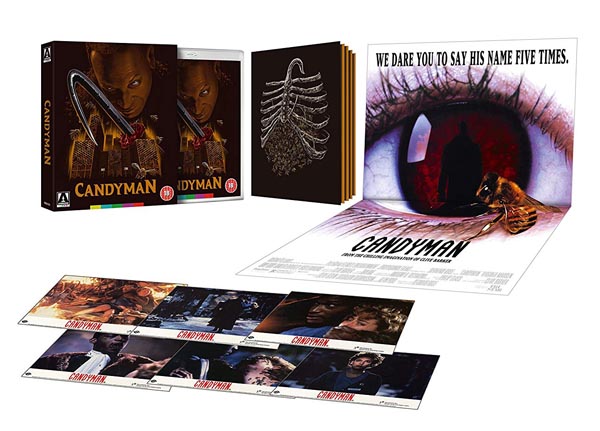
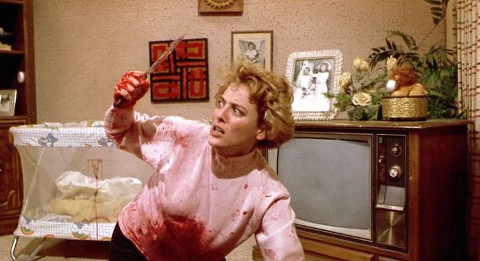
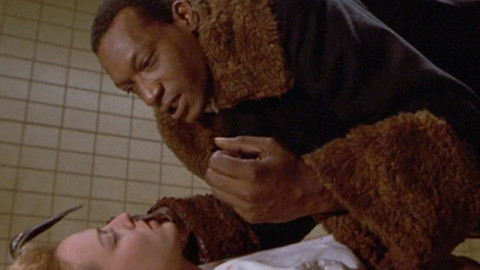

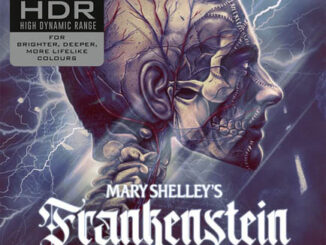
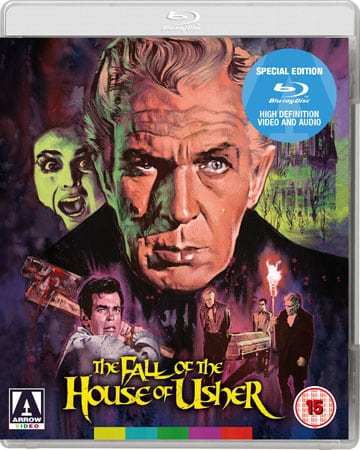

Be the first to comment